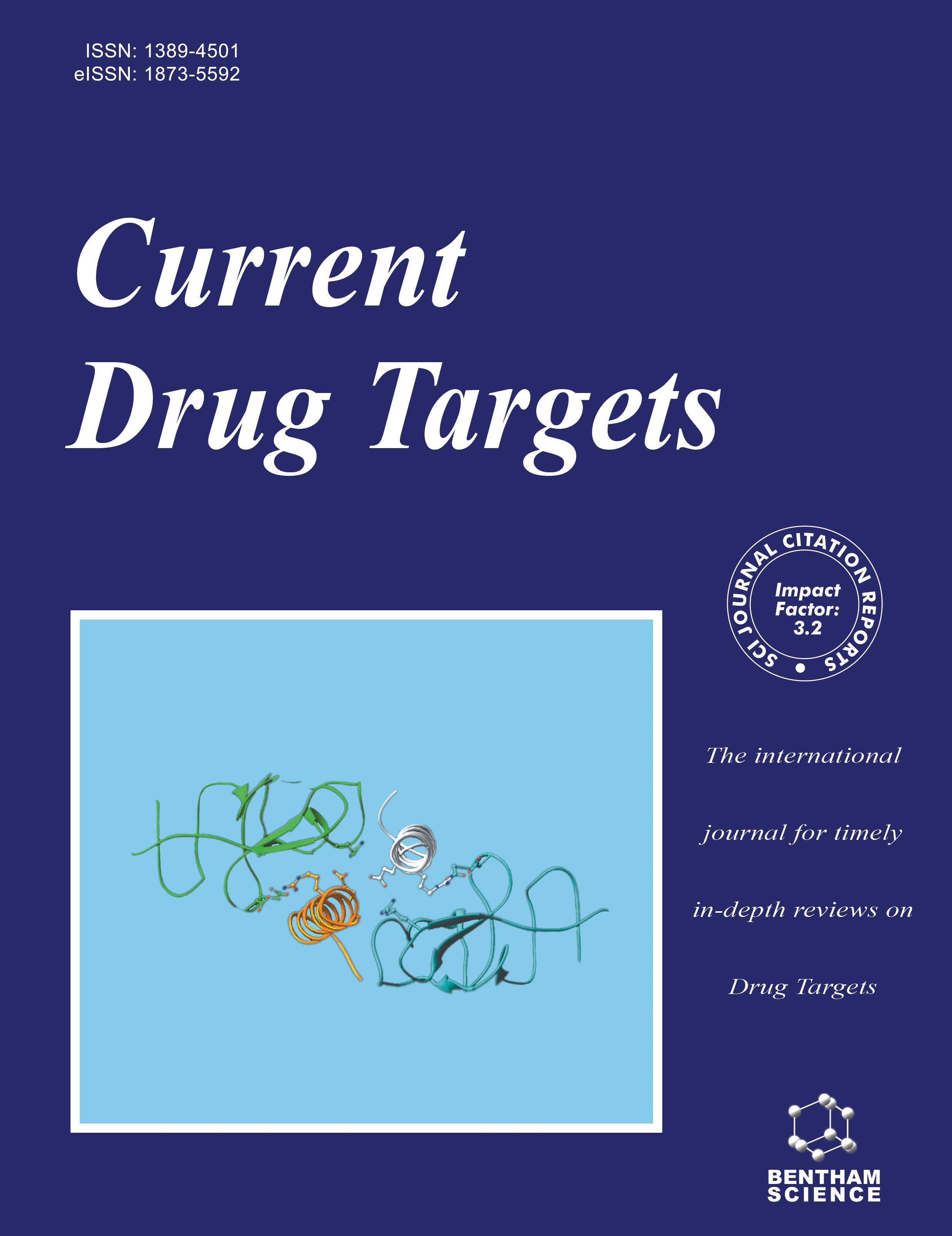- Home
- A-Z Publications
- Current Drug Targets
- Issue Home
Current Drug Targets - Current Issue
Volume 26, Issue 5, 2025
-
-
Repurposing Nano Curcumin: Unveiling its Therapeutic Potential in Diabetic Nephropathy
More LessAuthors: Rarchita Sharma, Yogesh Mali, Yogeeta. O. Agrawal, Vinit V. Agnihotri and Sameer N. GoyalCurrently, Diabetic Nephropathy (DN) stands as the predominant global cause of end-stage renal disease. Many scientists believe that diabetes will eventually spread to pandemic levels due to the rising prevalence of the disease. While the primary factor leading to diabetic nephropathy is vascular dysfunction induced by hyperglycemia, several other pathological elements, such as fibrosis, inflammation, and oxidative stress Read More
-
-
-
Pharmacological and Therapeutic Potential of a Natural Flavonoid Icariside II in Human Complication
More LessAuthors: Dhirendra Singh and Randhir SinghEmerging challenges to human health necessitate a coordinated effort to find both preventative and therapeutic techniques, with natural products at the forefront of attempts to gain novel medicines and minimize disease transmission and related death. The medicinal potential of chemicals contained in plants has been known for centuries, leading to its use in homes and clinics for the treatment of numerous disorders. Despi Read More
-
-
-
Emerging Combinatorial Drug Delivery Strategies for Breast Cancer: A Comprehensive Review
More LessAuthors: Harshita Singhai, Sarjana Raikwar, Sunny Rathee and Sanjay K. JainBreast cancer remains the second most prevalent cancer among women in the United States. Despite advancements in surgical, radiological, and chemotherapeutic techniques, multidrug resistance continues to pose significant challenges in effective treatment. Combination chemotherapy has emerged as a promising approach to address these limitations, allowing multiple drugs to target malignancies via distinct mechanisms o Read More
-
-
-
Signaling Dynamics in Osteogenesis: Unraveling Therapeutic Targets for Bone Generation
More LessAuthors: Xue D. Yang, Christopher L. Haga and Donald G. PhinneyDiseases affecting bone encompass a spectrum of disorders, from prevalent conditions such as osteoporosis and Paget's disease, collectively impacting millions, to rare genetic disorders including Fibrodysplasia Ossificans Progressiva (FOP). While several classes of drugs, such as bisphosphonates, synthetic hormones, and antibodies, are utilized in the treatment of bone diseases, their efficacy is often curtailed by i Read More
-
Volumes & issues
-
Volume 26 (2025)
-
Volume 25 (2024)
-
Volume 24 (2023)
-
Volume 23 (2022)
-
Volume 22 (2021)
-
Volume 21 (2020)
-
Volume 20 (2019)
-
Volume 19 (2018)
-
Volume 18 (2017)
-
Volume 17 (2016)
-
Volume 16 (2015)
-
Volume 15 (2014)
-
Volume 14 (2013)
-
Volume 13 (2012)
-
Volume 12 (2011)
-
Volume 11 (2010)
-
Volume 10 (2009)
-
Volume 9 (2008)
-
Volume 8 (2007)
-
Volume 7 (2006)
-
Volume 6 (2005)
-
Volume 5 (2004)
-
Volume 4 (2003)
-
Volume 3 (2002)
-
Volume 2 (2001)
-
Volume 1 (2000)
Most Read This Month Most Read RSS feed
Article
content/journals/cdt
Journal
10
5
false
en


